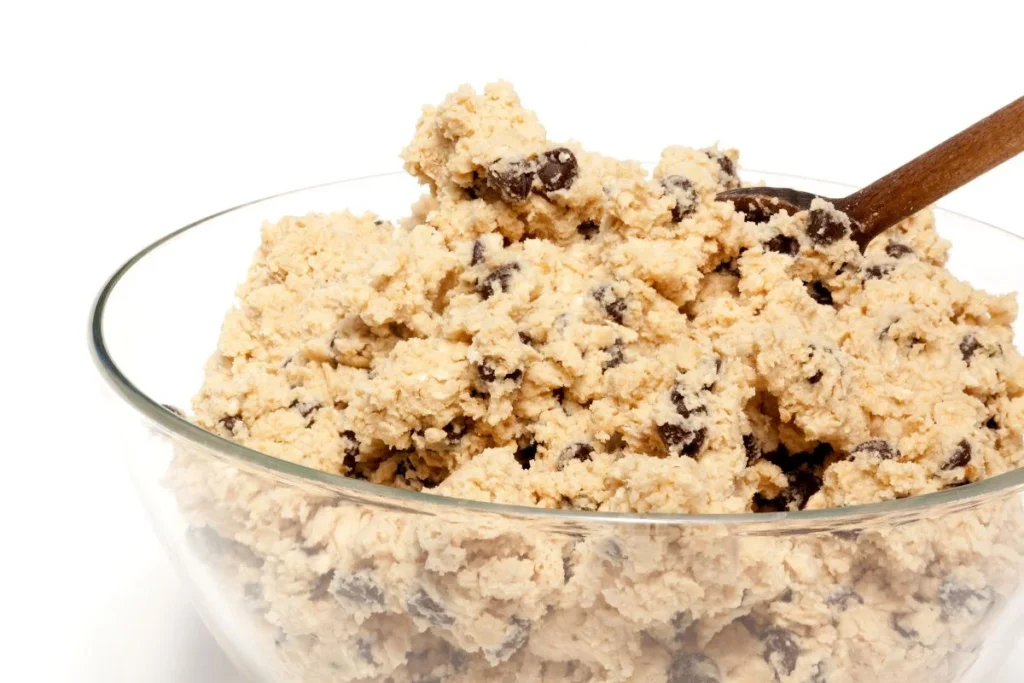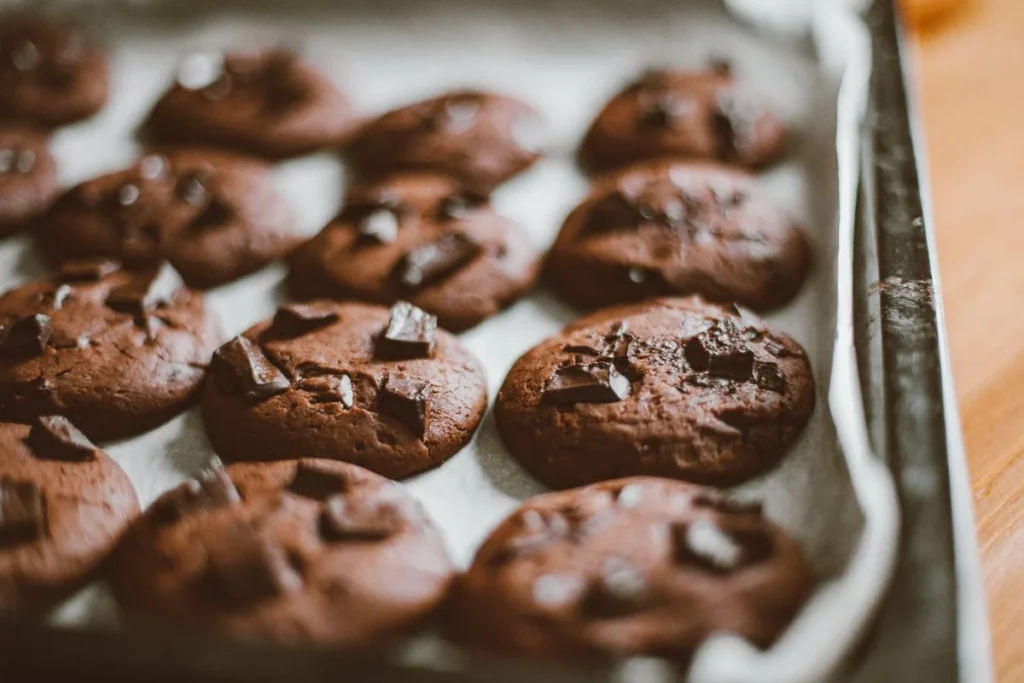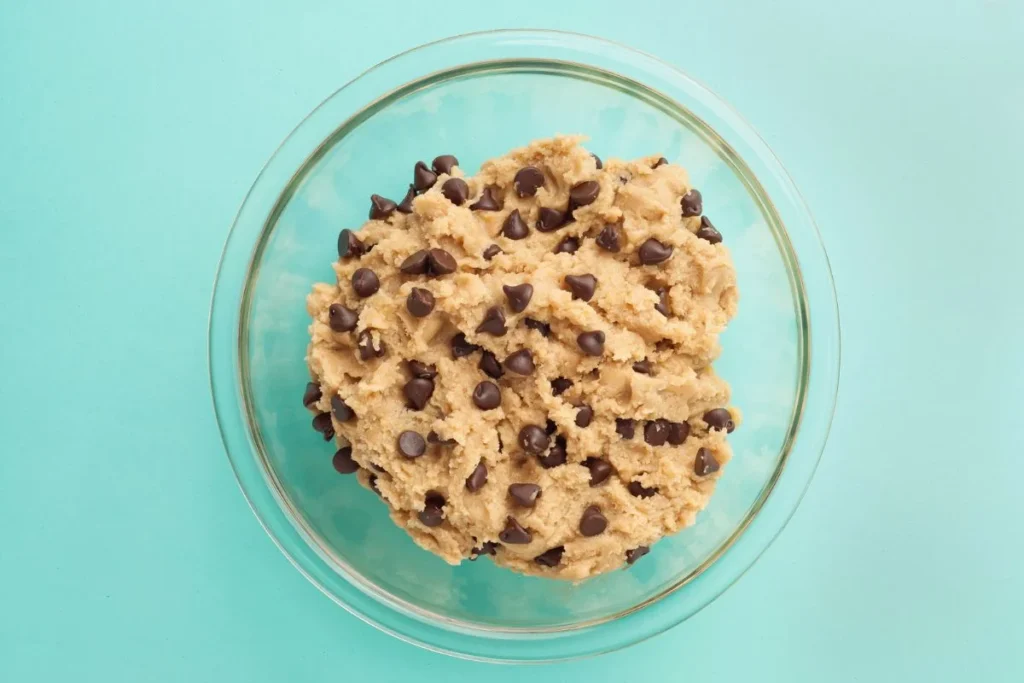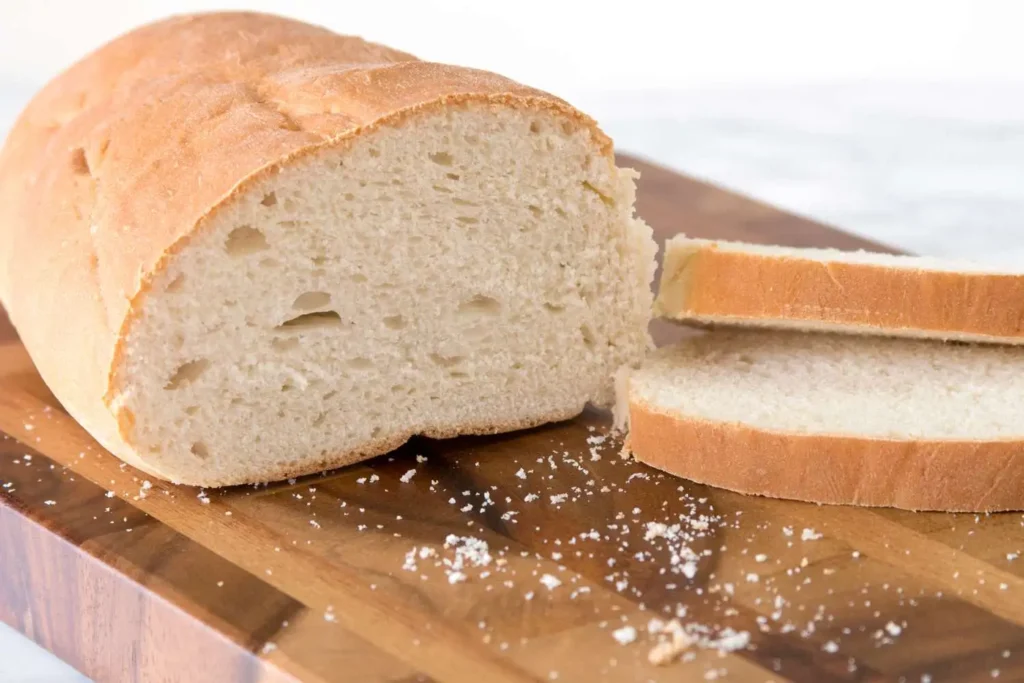
Tired of ending up with dry cookie dough that ruins your baking plans? You’re not alone. We’ve all been there. But fear not, because, in this blog post, we’ve got five proven methods to rescue your dry cookie dough and save your baking day.
Whether you’ve added too much flour, overmixed the dough, or simply missed an ingredient, we’ve got the solutions to turn your dry, crumbly mess into delectable cookies that will have everyone begging for more.
Table of Contents
ToggleUnderstanding The Problem | What Causes Cookie Dough to Become Dry?
Dry cookie dough can be a real letdown for baking enthusiasts, turning the excitement of making delicious treats into a kitchen disaster. To deal with this problem effectively, it’s important to figure out why dry cookie dough happens in the first place.
1. Over Mixing
Overmixing is a common pitfall that can turn your cookie dough into a dry, crumbly mess. When you vigorously mix the ingredients, you inadvertently activate the gluten in the flour. Excessive gluten development results in a tough, dry texture.
To avoid this, mix your ingredients until just combined, preventing overworking the dough.
2. Incorrect flour measurement
The ratio of wet to dry ingredients is a delicate balance in baking. Incorrect flour measurement is a significant factor leading to dry cookie dough. Using too much flour can absorb excess moisture, leaving your dough dry and difficult to work with.
Invest in accurate measuring tools, and when in doubt, follow recipes precisely to achieve the perfect balance.
3. Aged Ingredients
The freshness of your ingredients matters more than you might think. Aged flour, baking powder, and other leavening agents lose their effectiveness over time. Expired or stale ingredients contribute to dry cookie dough.
Regularly check the expiration dates of your baking staples and replace them to ensure optimal results.
4. Inadequate Moisture Content
Insufficient moisture content in your dough can lead to dry cookies. The lack of liquid ingredients, such as eggs, milk, or extracts, can leave your dough parched.
It’s crucial to follow the recipe’s recommended liquid proportions, and when needed, experiment with additional moisture-rich ingredients like applesauce or yogurt to revive the dough.
5. Environmental Factors
Believe it or not, humidity plays a role in the texture of your cookie dough. In dry climates, the moisture in your ingredients evaporates more quickly, affecting the overall dough consistency.
Conversely, in humid environments, you may need to adjust your recipe slightly to accommodate the extra moisture in the air.
6. Storage Conditions Matter
How you store your ingredients can impact the moisture levels in your dough. Improperly stored ingredients, especially flour and sugar, can absorb moisture from the air, resulting in dry dough.
Store these staples in airtight containers in a cool, dry place to maintain their freshness and ensure your dough stays pleasantly moist.
7. Effects of Sugar and Fat Ratios
Balancing the sugar and fat ratios in your recipe is crucial. Too much sugar can absorb excess moisture, leading to a drier dough. On the other hand, insufficient fat can hinder the dough’s ability to retain moisture.
Finding the right equilibrium between sugar and fat is essential for achieving the desired texture.

How to Fix Dry Cookie Dough with These 5 Methods
Dry cookie dough can be a real buzzkill for any baking enthusiast. The good news is that you don’t have to toss it out and start over. In fact, with a few clever methods, you can breathe life back into your dry cookie dough.
Let’s explore five effective techniques to salvage your baking masterpiece.
Method 1: Adding Liquid Ingredients
When faced with dry cookie dough, a quick fix often involves adding liquid ingredients. This method is like giving your dough a refreshing drink to quench its thirst. Start by incorporating small amounts of liquid, such as milk or water, into the dough. Mix gradually until the desired consistency is reached.
The addition of liquid not only moistens the dough but also helps bind the ingredients together. Be cautious not to overdo it, as too much liquid can lead to a sticky mess. The key is to find the right balance, achieving a soft and pliable dough that’s ready for the oven.
Method 2: Adjusting the Dry Ingredients
Sometimes, the culprit behind dry cookie dough lies in the ratio of dry ingredients. Adjusting these ratios can make a significant difference. Begin by assessing the flour content, which is often the main contributor to dryness.
If your dough feels excessively dry, gradually add more flour. Conversely, if it’s too crumbly, introduce additional wet ingredients. This method allows you to fine-tune the composition of your cookie dough until it reaches the perfect consistency.

Method 3: Incorporating Additional Fats
Fats play a crucial role in creating moist and tender cookies. If your cookie dough lacks the necessary fats, it’s bound to be dry. Consider adding extra butter or oil to infuse richness and moisture back into the mixture.
Begin with small increments, mixing thoroughly after each addition. This gradual process ensures that you achieve the ideal balance without overwhelming the dough. Before you know it, your once-dry cookie dough will transform into a luscious, delectable batter.
Method 4: Using Fruit Purees or Extracts
Nature’s sweetness can come to the rescue when fixing dry cookie dough. Fruit purees, such as applesauce or mashed bananas, can add both moisture and flavor. These natural alternatives not only enhance the taste but also contribute to a softer texture.
Incorporate fruit purees gradually, adjusting the quantity based on the desired consistency. Additionally, consider experimenting with extracts like almond or citrus, which can elevate the flavor profile while addressing dryness.
Method 5: Refrigerating or Resting the Dough
Sometimes, a bit of patience is the key to reviving dry cookie dough. Refrigerating or allowing the dough to rest gives the ingredients time to mingle and absorb moisture. This method is especially effective when the dryness is a result of overmixing or a rushed baking process.
Place the dough in the refrigerator for at least 30 minutes or, for a more extended period, overnight. This allows the fats to solidify, resulting in a firmer and moister dough. Patience truly pays off when it comes to rescuing your baking endeavors.

How to Fix Dry Cookies After Baking
There’s nothing worse than being super excited to see how your baking turned out, only to discover that your cookies are dry and not so tasty. But don’t worry, there are ways to fix them after baking.
In this section, we’ll look at some proven methods to turn those not-so-great cookies into moist and delicious treats.
- Assessing the Situation Before diving into solutions, it’s essential to assess the degree of dryness in your cookies. If they are overly dry and crumbly, a simple fix may not suffice. However, for cookies that are slightly dry on the surface, the following techniques can work wonders.
- Brushing with Simple Syrup One of the most effective ways to add moisture to dry cookies is by using a simple syrup. Create a mixture of equal parts water and sugar, gently heating it until the sugar dissolves. Allow the syrup to cool slightly, then brush it onto the surface of each cookie. This method not only restores moisture but also adds a subtle sweetness.
- Steaming for Moisture For cookies that have lost their moisture, a quick steaming can work wonders. Place the cookies on a heatproof surface and, using a steamer or improvised steaming setup, expose them to steam for 10-15 seconds. Be cautious not to oversaturate, as this can lead to sogginess. The steam allows the cookies to absorb moisture, rejuvenating their texture.
- Microwaving with a Damp Paper Towel In cases where your cookies have become excessively dry, a brief stint in the microwave can come to the rescue. Place a damp paper towel in the microwave with the cookies and heat them in short intervals. The moisture from the towel will infuse into the cookies, revitalizing their softness.
- Adding a Moist Ingredient Topping Take your dry cookies to the next level by introducing a topping that not only adds visual appeal but also brings moisture. Consider a drizzle of chocolate ganache, caramel, or a dollop of whipped cream. These additions not only enhance the overall presentation but also contribute to a more enjoyable eating experience.
- Storing with Bread Slices For cookies stored over time that have lost their moisture, consider placing them in an airtight container with a slice of fresh bread. The cookies will absorb the moisture from the bread, gradually regaining their softness.

Expert Tips for Preventing Dry Cookie Dough
1. Get Your Flour Right: Start by being precise. Use a kitchen scale to measure your flour accurately. Too much flour can make your cookies dry, so stick to your recipe carefully.
2. Add Flour Slowly: When you’re mixing in the flour, do it bit by bit. This helps you avoid overmixing and gives you better control over the texture of your dough.
3. Quality Ingredients Matter: The stuff you use really makes a difference. Choose fresh, high-quality flour, sugar, and leavening agents to keep your dough nice and moist.
4. Mix Mindfully: Don’t overdo it when you’re mixing—this is a common reason for dry cookie dough. Mix until everything’s just blended to keep that perfect moisture balance.
5. Room Temperature Ingredients: Make sure your ingredients, especially butter and eggs, are at room temperature. Using cold stuff can make your dough too stiff and your cookies too dry.
6. Keep an Eye on Humidity: Think about your surroundings. Adjust your recipe a bit on humid days because the moisture in the air can mess with your dough’s consistency.
Rescue Dry Cookie Dough | Final Thoughts
In summary, making the perfect cookie dough involves paying attention to a few key things. If you mix the ingredients too much, it can make the texture dry because of too much gluten. So, just mix them until they’re combined. It’s important to measure the flour precisely – too much can make the dough dry and hard to work with.
Make sure your ingredients are fresh because using old ones can give you not-so-great results. Keep the moisture right by following the recommended liquid amounts and adding extra moisture if needed.
Be aware of things like humidity and store your ingredients correctly. Also, balance out the sugar and fat amounts, and choose high-quality ingredients to take your cookie dough from good to amazing.
Lindsey Mackenzie
About me
Hi there! I’m Lindsey Mackenzie, the founder of Bake Smartly. Baking has been my passion since childhood, growing up in my father’s bakery. With Bake Smartly, I’m excited to share my love for all things sweet and savory. Join me on this delicious journey as we whip up scrumptious treats and sprinkle joy into every bite!






